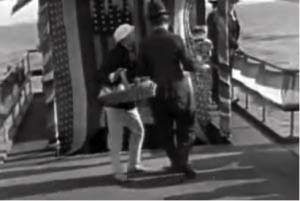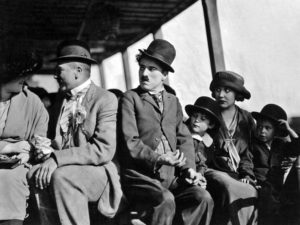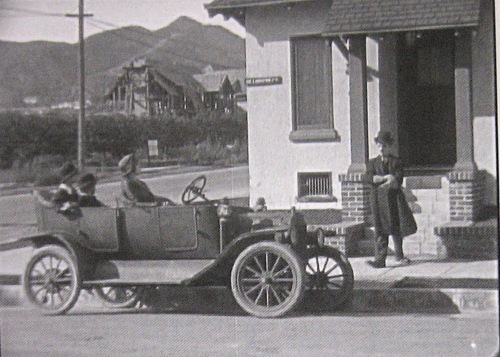Chaplin’s A Day’s Pleasure called Charlie’s Picnic is an excursion in San Pedro harbor. It’s not a picnic, and Chaplin preferred A Day’s Pleasure as an ironic title because the story is a series of ironic misfortunes: seasickness, fistfights, and a return home that ends with a fight with traffic police in a drying pile of cement. As the film ends, Chaplin hammers the joke with a final screen legend, “The end of a perfect day.”
This unpicnicky day begins with Charlie, his wife, and their two children settling into their Ford Model “T” Touring car. Charlie wanders among the passengers, crew, and entertainers aboard the boat. Nothing is immune from his feisty attitude that allows for his usual comic slapstick routines, even a deck chair that he cannot unfold. Of course, Charlie has trouble cranking the motor –a comedy staple always good for a laugh.

Reeling and seasick, Charlie resists the offer of food from a vendor, whose tray he throws to the deck .
When swells increase, Charlie becomes seasick. Searching for the head, he is accosted by a food vendor asking if he wants ham sandwiches, buttered popcorn, cigars, and cigarettes. Charlie knocks the vendor’s tray over. Ha!
Because the man sitting next to Charlie is crowding him, Charlie sticks him with a pin. This leads to a fight that Charlie wins by repeatedly punching his foe in the groin. Ha! Ha!

Charlie with a stickpin ready to pounce. Charlie (Charles Chaplin), his Wife (Edna Purvance), and their two boys.
See Charles Chaplin. A Day’s Pleasure (1919). Screenplay by Charles Chaplin.
Streaming: https://archive.org/details/adayspleasure_201909

